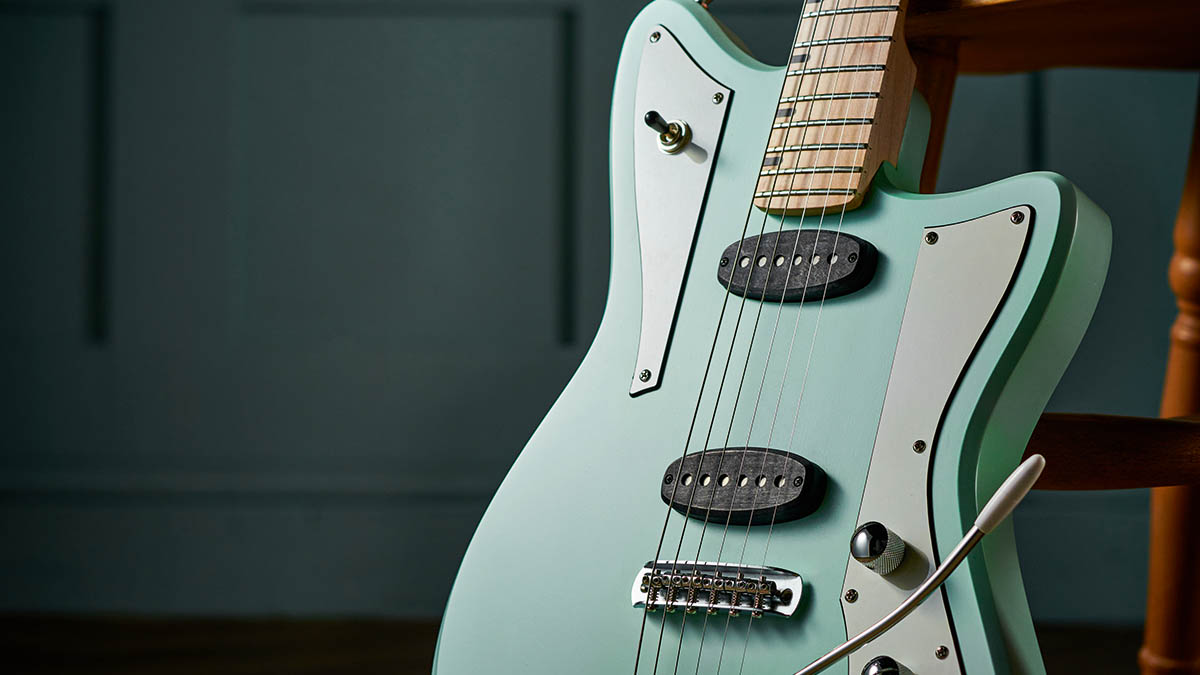Guitar World Verdict
It’s early days for C9, but for the right player this Ventura is a little gem. It’s far from a radical design and yet it’s the crisp uncluttered build with its simple drive that’s the appeal, paired with original-looking but pretty classic-sounding ‘hot’ single coils.
Pros
- +
Vibey, simple-but-classy build.
- +
Thin finish.
- +
Good neck feel and playability.
- +
In-tune vibrato.
- +
Characterful sounds from the unique-looking single-coils.
Cons
- -
Mismatched truss rod cover.
- -
Pickups can’t be swapped without irreversible modification.
You can trust Guitar World
There’s a rich industry of guitar makers in the UK, but not all of their fabulous instruments can be classed as affordable. Well, affordability is the premise behind C9 Custom Guitars: a partnership between experienced production guitar specialist Mark Lamaq and high-end machinehead-maker Keith Robson, who has turned his attention to guitar making in the past few years.
The duo only formed the company in 2022 (though Mark had previously been helping Keith to create instruments under the Robson brand), but they’ve already attracted the attention of Northern heroes such as Tim Burgess, Mani and Paul Arthurs.
Our review electric guitar, the Ventura, is effectively a production prototype and is one of three models in the range. So while it’s early days for C9, this guitar illustrates the intended style and vibe, which is perhaps best described as ‘affordable boutique’. But what does that actually mean?
First of all, 90 per cent of the guitar is made in the UK, in Shiney Row, Houghton Le Spring, just outside of Sunderland. The woodworking is very clean, with a slab body that’s approximately 41mm thick made from grandis, “a FSC-certified wood used in the building industry, for example”, Mark explains. “It’s like a slightly lighter African mahogany, although the weight can vary between super light and ordinary.”

There are no curved contours and, instead of being radiused, the edges have a light chamfer (as used, for example, by PJD on its start-up Standard models) that’s increased in width where you’d normally expect a curved forearm and rib-cut contour. The relatively large offset body size does contribute to the weight, but it still drops in about ‘right’ for its Jazzmaster-inspired style.
Like the body, the neck craft is crisp. It’s quarter-sawn maple, although, says Mark, “generally we go for half-quarter [rift sawn] rather than slab sawn, which we tend to avoid”. The fretwork is good and those stylish edge markers, from ebony, are very cleanly installed.
The six-in-a-line headstock isn’t going to bother Fender and actually reminds us more of the sleeker, more modernistic style of Yamaha’s Pacifica. Both neck and body are finished in-house with a very thin satin polyurethane, the neck clear-coated with no tint.

With the guitars coming in around £1k, the hardware isn’t made in the UK. It’s worth noting, though, that the perfectly serviceable Wilkinson EZ-Lok tuners are designed here, with dual holes in the post so you can tie-lock the strings.
The Jazzmaster/Jaguar-style vibrato with matching separate bridge is more generic, but it’s a perfectly good unit, despite lacking the tuning lock of the original design. The system was nicely set up and, once the guitar had settled in, its tuning stability was perfectly good.
The two separate scratchplates certainly add to the Ventura’s clean, crisp look – as well as seeming to reference Dennis Fano’s Korean-made Rivolta Mondata – but they’re made of Traffolyte, a layered phenolic resin (also known as Formica) and often used for engraved key fobs and machine labels.
Feel & Sounds
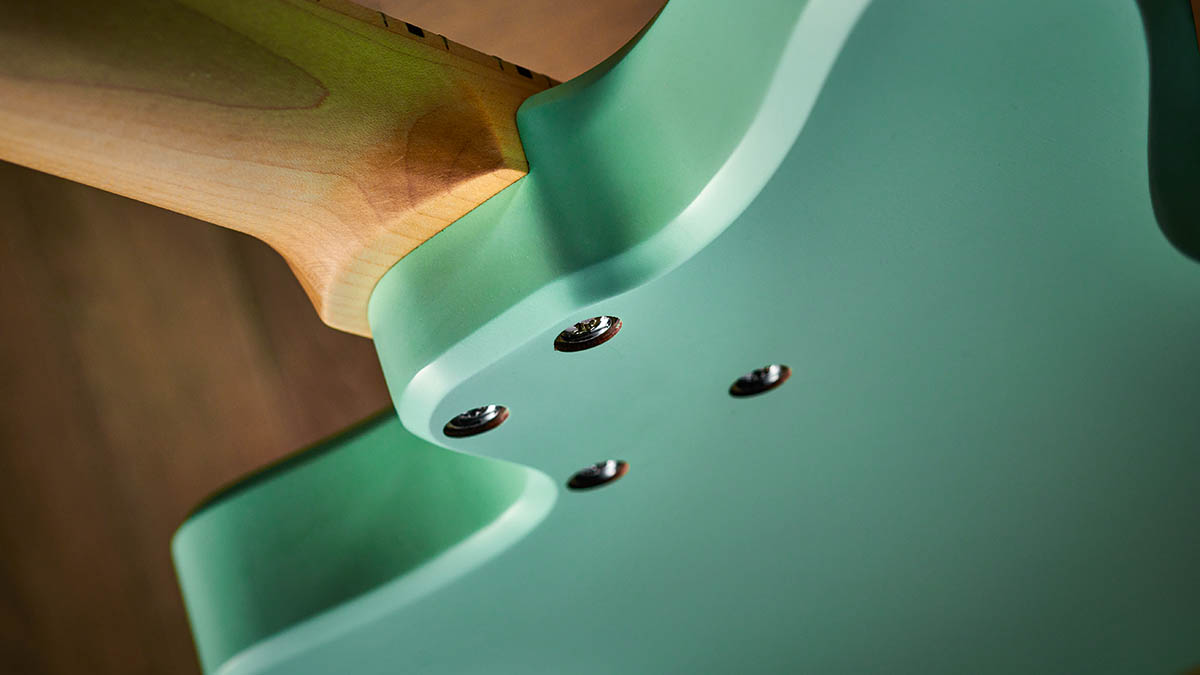
There’s a very purposeful feel here. The Ventura comes across as more of a stage guitar than a sofa noodler. It hangs well on a strap with the neck pulled out a little further to your left-hand side – as you find with a Jazzmaster. Acoustically, we get that typical Jazzmaster resonance created by the ‘dead’ string length behind the bridge, which is set quite low to the body.
Fitting a neck shim to raise the height of the bridge and increase that back angle would be an improvement for players with a heavier right-hand. Either way, like any Jazzmaster-style vibrato, these are common and easy enough adjustments. As is, there’s nothing wrong with the playability.
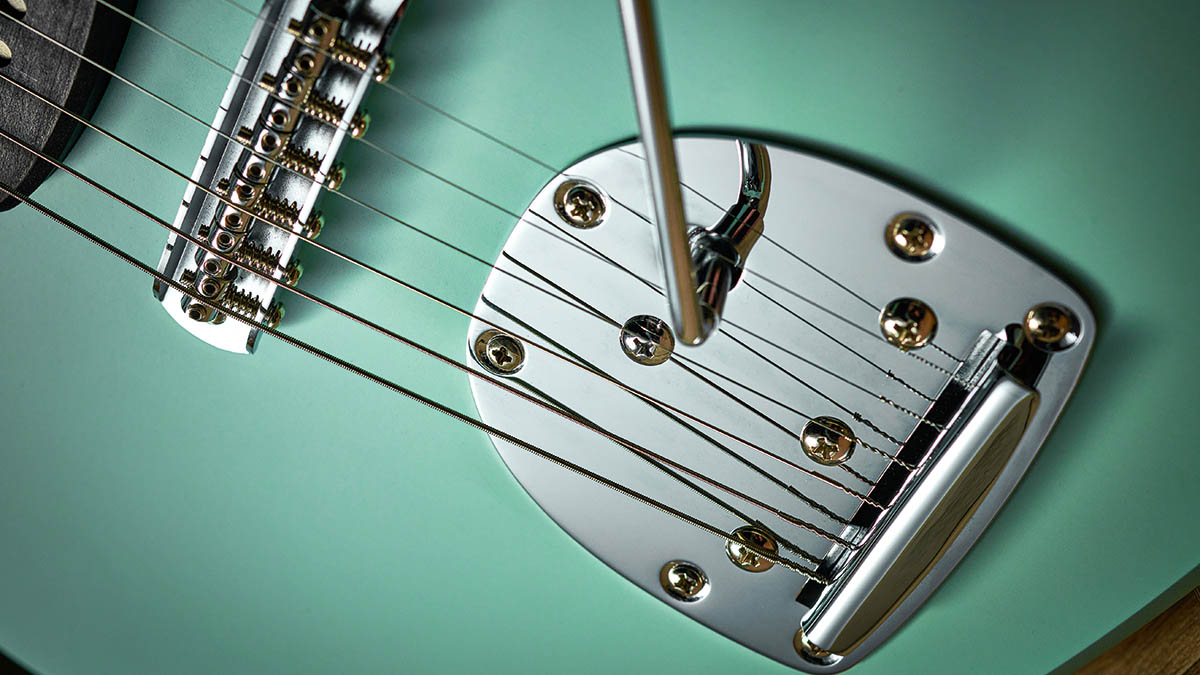
The neck is pretty Fender-y in width, although the fingerboard radius is flatter at 305mm (12 inches) and the medium wide and low frets (approximately 2.55mm wide by 1mm high) create a very clean and classic playing feel.
We might suggest slightly rolling the fingerboard edges a little more, not least if you wrap your thumb around the bass strings. Depth-wise, they’re pretty slim, though not in the shred category, and this depth remains pretty constant along its length: approximately 21.6mm at both the 1st and 12th frets.
We’re not entirely sure what to expect in terms of sound from the in-house single coils, but we’re met with a combination of heat and clarity with a choppy percussive attack as if we’d bundled together a Jazzmaster and a Telecaster. As supplied, the pickup voicings are a little contrasted; the big full-voiced neck is a little dominant compared with the obviously brighter, thinner bridge voice.
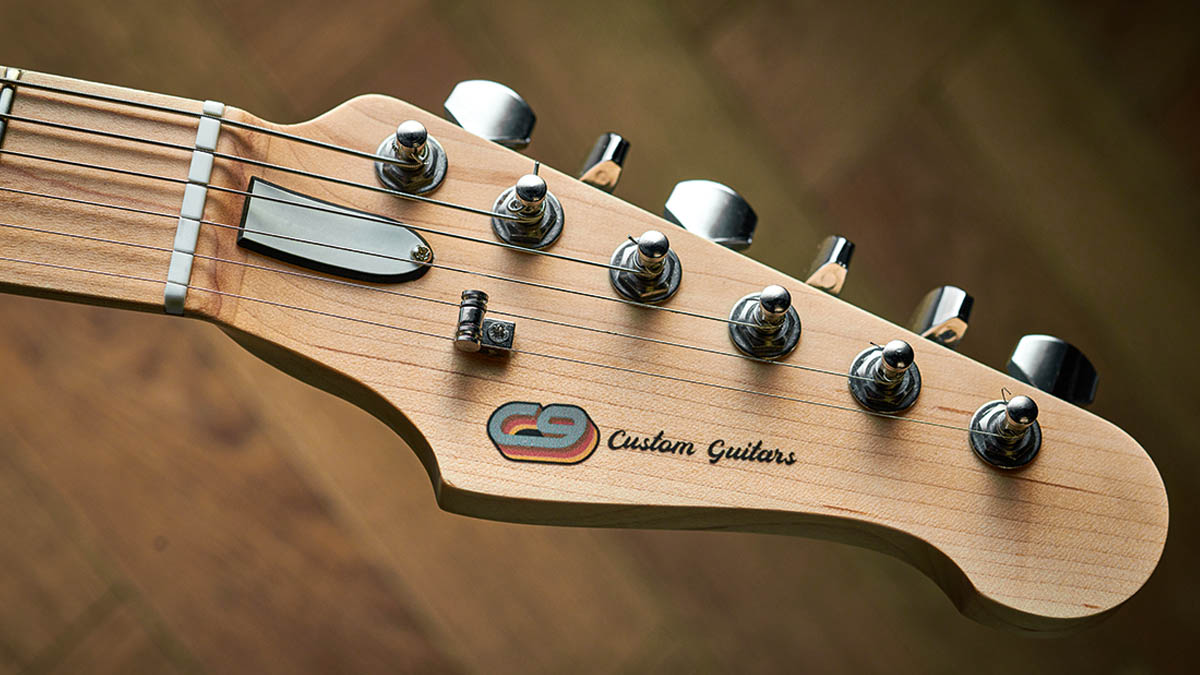
While some might prefer a little more kick at bridge, this slight mismatch actually sounds more like a classic Tele Custom (with its Wide Range humbucker at the neck and a classic single coil at the bridge); the pickup mix is really good with depth, bounce and excellent clarity. The top string response is also a little soft, but a couple of minutes with a screwdriver balanced the outputs a little more.
Not only that, adding a little more tilt (with the treble sides closer to the strings than the bass) improves the string-to-string balance. It actually proves to be quite a compelling piece, covering big Jazzmaster-like cleans with quite a soulful voice at the neck, and crisp and slightly gritty surf leads at the bridge.
That said, plug into a nastier, crunchy Marshall and there’s a very characterful, punky honk at the bridge, which certainly pokes through a denser rock mix. And if you’re into your pedals, this Ventura won’t be offended.
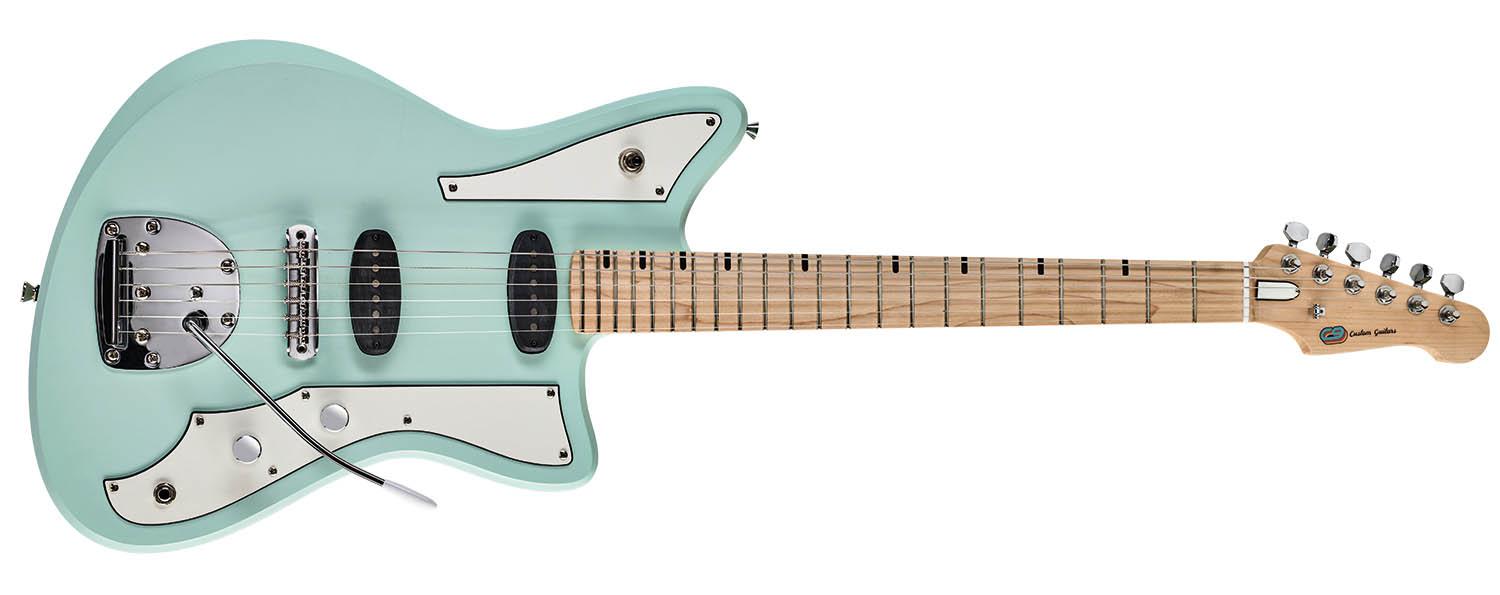
Verdict
It’s early days for C9, but for the right player this Ventura is a little gem. It’s far from a radical design and yet it’s the crisp uncluttered build with its simple drive that’s the appeal, paired with original-looking but pretty classic-sounding ‘hot’ single coils.
These uniquely shaped pickups do mean retrofits are a no-go, and if we were C9 we’d be considering some aftermarket alternatives in terms of voicing and power. Hardware and electronics upgrades, on the other hand, are easy to facilitate.
The ‘affordable’ British-made guitar is not a unique proposition, of course; Gordon Smith’s Gatsby is in the same offset ballpark, as are makers such as Elliott Trent.
But for us, the customers and players, more choices are always welcome, especially when they’re as cleanly made as this. And along with this bolt-on model, we can expect some set-neck designs later this year. A promising debut!
Specs
- PRICE: £995 (inc gigbag)
- ORIGIN: UK
- TYPE: Double-cutaway offset solidbody electric
- BODY: FSC-certified grandis
- NECK: Maple, slim ‘C’ profile, bolt-on
- SCALE LENGTH: 648mm (25.5”)
- NUT/WIDTH: Synthetic/42.72mm
- FINGERBOARD: Maple, ebony edge markers, 305mm (12”) radius
- FRETS: 22, medium
- HARDWARE: Offset-style top mounting vibrato with separate 6-saddle bridge; Wilkinson EZ-Lok die-cast tuners – chrome-plated
- STRING SPACING, BRIDGE: 54.5mm
- ELECTRICS: 2x C9 Alnico V hot wound single coils (in black-stained maple covers), 3-way toggle pickup selector, master volume and
tone controls - WEIGHT (kg/lb): 3.89/8.56
- OPTIONS: Watch this space! The Ventura will also be available with tune-o-matic and stud tailpiece and/or Duesenberg Les Trem II (£POA)
- RANGE OPTIONS: C9 offers the double-cut Diamond (from £1,095) with 3x single coils and a Bigsby-style vibrato and the more single-cut offset California (from £1,195) with 3x single coils and a hardtail or vibrato. Bass versions are available, too
- LEFT-HANDERS: Yes, to order
- FINISHES: Peppermint (as reviewed) from range of pastel colours – all satin
- CONTACT: C9 Guitars

Dave Burrluck is one of the world’s most experienced guitar journalists, who started writing back in the '80s for International Musician and Recording World, co-founded The Guitar Magazine and has been the Gear Reviews Editor of Guitarist magazine for the past two decades. Along the way, Dave has been the sole author of The PRS Guitar Book and The Player's Guide to Guitar Maintenance as well as contributing to numerous other books on the electric guitar. Dave is an active gigging and recording musician and still finds time to make, repair and mod guitars, not least for Guitarist’s The Mod Squad.
“It holds its own purely as a playable guitar. It’s really cool for the traveling musician – you can bring it on a flight and it fits beneath the seat”: Why Steve Stevens put his name to a foldable guitar
“Finely tuned instruments with effortless playability and one of the best vibratos there is”: PRS Standard 24 Satin and S2 Standard 24 Satin review
